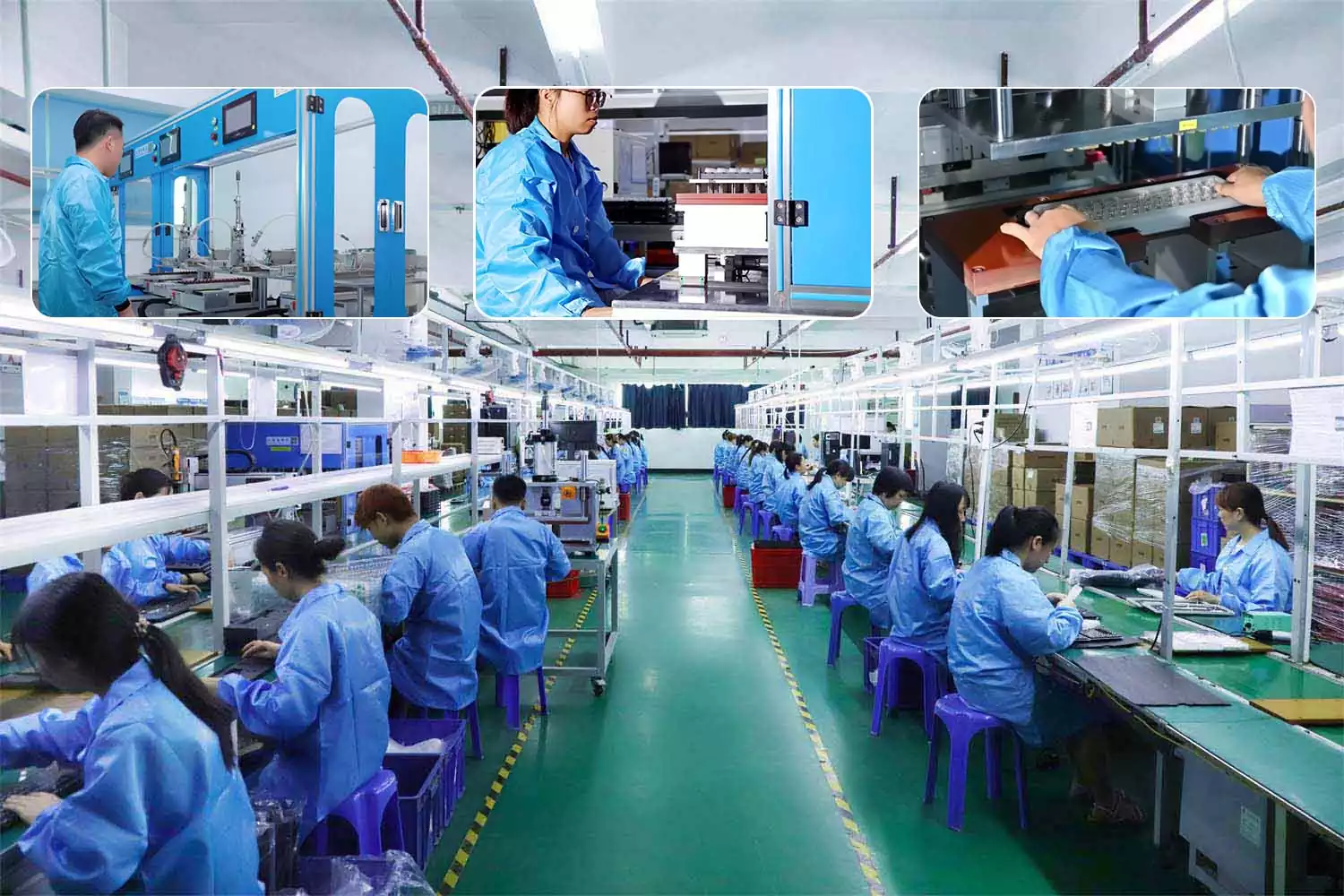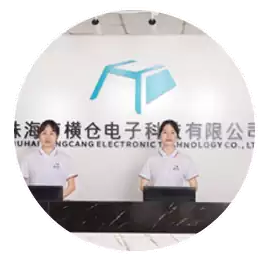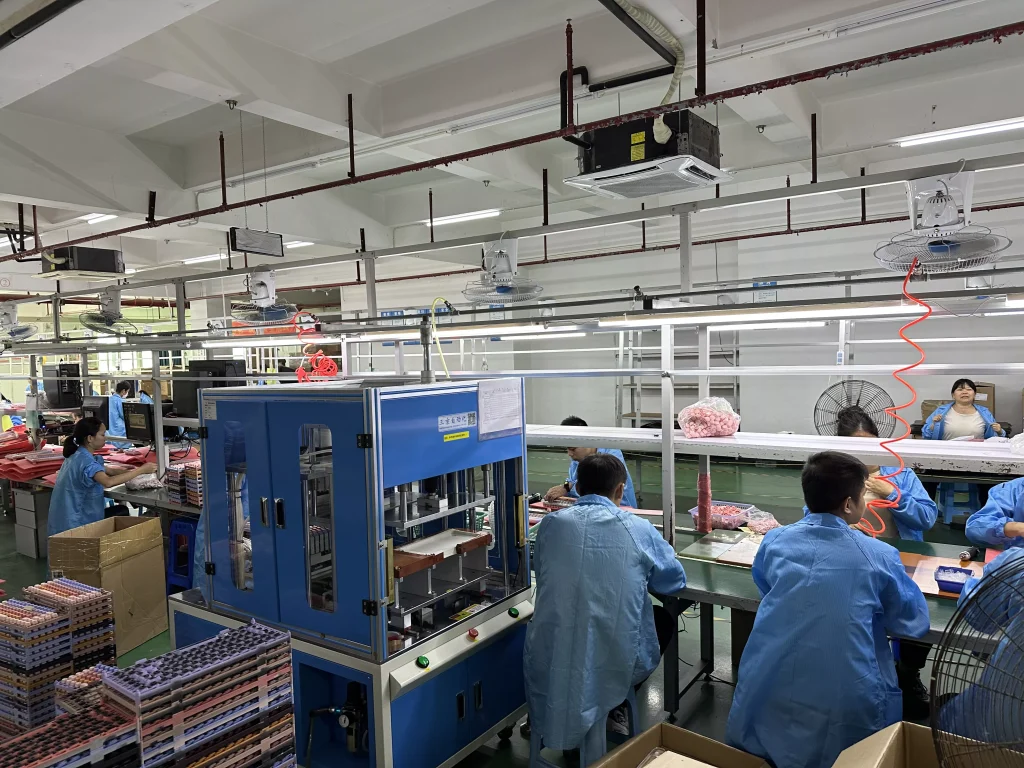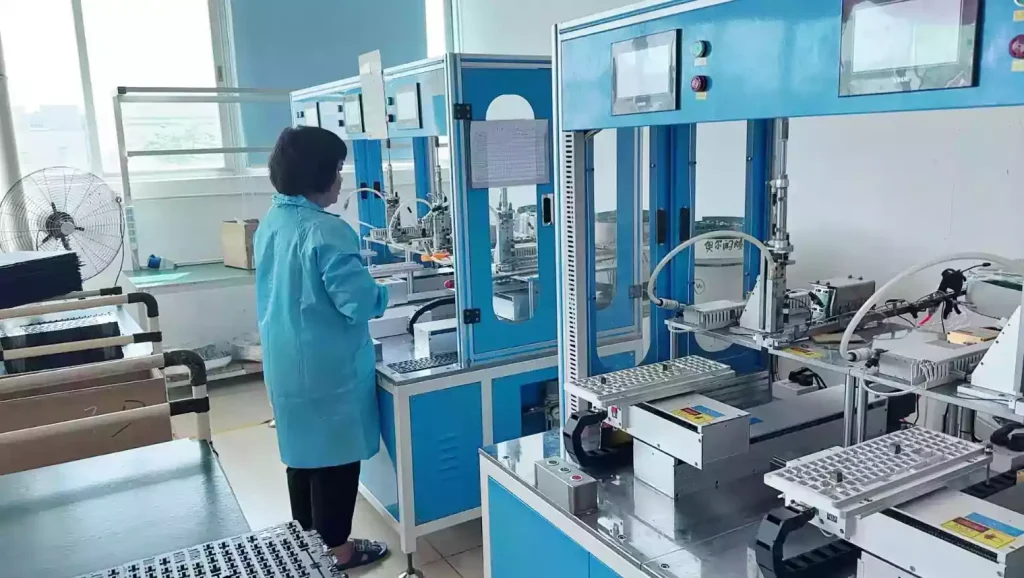Manufacturing a mechanical keyboard is a systematic engineering and art that integrates precision engineering, materials science, and human-centered design. The table below clearly outlines its core manufacturing processes, helping you quickly build a comprehensive understanding of mechanical keyboard production:
| Manufacturing Process Phases | Core Objective | Key Activities and Key Considerations |
|---|---|---|
| 1. Design & Material Preparation | Determine the performance standards, typing feel consistency, and aesthetic tone of keyboards | During mechanical keyboard design: Conduct circuit design, optimize structural layout, select switch types (e.g., tactile blue switches, linear red switches), and choose keycap materials (e.g., oil-resistant PBT, light-transmissive ABS) |
| 2. Mechanical Keyboard Component Manufacturing | Produce all core components of mechanical keyboards that meet international standards | PCB Manufacturing: Solder electronic components onto circuit boards using processes such as SMT (Surface Mount Technology). Keyboard Switch Manufacturing: Produce keyboard switches through processes like injection molding, steel sheet stamping, and internal assembly. Keycap Production: Manufacture keycaps via injection molding, followed by character printing (e.g., silk screening, laser engraving) and surface treatment. Case Production: Typically manufacture keyboard cases using processes such as injection molding, die casting, or machining. |
| 3. Mechanical Keyboard Assembly & Commissioning | Integrate precision-manufactured mechanical keyboard components into a fully functional whole | Zhuhai Hengcang’s mechanical keyboard assembly process: Install and solder switches onto the PCB with professional equipment, then assemble the case and internal structure per design standards, and finally install the keycaps. |
| 4. Finished Mechanical Keyboard Quality Inspection | Strictly ensure every mechanical keyboard leaving the factory meets consistent quality and reliability standards | Mechanical Keyboard Functional Testing: Verify each key’s actuation sensitivity, full anti-ghosting performance (for gaming models), and backlight consistency to ensure stable functionality. |
💡 Mechanical Keyboard Craftsmanship: In-depth Considerations and Industry Trends

Mechanical keyboard craftsmanship is not merely about "realizing functions"; it is a systematic project that deeply integrates precision manufacturing, materials science, and user experience. It not only determines the durability and stability of the keyboard but also directly influences the tactile feedback and personalized needs of users during daily input. As a professional R&D and production enterprise of mechanical keyboards, Zhuhai Hengcang Electronic Technology Co., Ltd. has always placed craftsmanship details and user needs at the core in its years of industry practice. Through continuous exploration of materials, customization, and environmental protection, it provides the market with mechanical keyboard products that combine quality and experience.
1. Materials and Typing Feel: The Core Breakthrough from "Usable" to "Pleasant to Use"
The selection of keycap and case materials is the "cornerstone" of a mechanical keyboard’s feel and durability. In this link, Hengcang Electronic has established strict material screening and testing standards: For keycaps, the mainstream PBT material has become the first choice for its mid-to-high-end mechanical keyboards due to its excellent wear resistance (tested in Hengcang’s laboratory to withstand more than 5 million keystrokes without obvious "oiling" marks) and dry tactile feel (avoiding stickiness after long-term use). Meanwhile, ABS material, with its cost advantage and excellent light transmittance (suitable for RGB backlit keyboards), is used in entry-level products and customized backlit models. All ABS keycaps undergo Hengcang’s independently developed "anti-yellowing treatment process" to extend the service life of their appearance.
In terms of keyboard cases, Hengcang offers diversified options based on different scenario needs: For daily office and home use, high-strength ABS engineering plastics (with an impact resistance of 20kJ/m²) are adopted to balance portability and durability; for esports players and industrial scenarios, aluminum alloy case models are launched. These cases undergo CNC precision machining (with an accuracy controlled within ±0.1mm) to enhance structural stability, and are paired with anodizing technology to improve surface wear resistance and corrosion resistance. For example, the mechanical keyboard customized by Hengcang for an overseas esports brand passed 200 salt spray tests without rust, winning high recognition from the client.
2. Personalization and Customization: Meeting the "One-of-a-Kind" User Needs
As the mechanical keyboard market upgrades from "popularization" to "segmentation", personalized customization has become one of the core trends in the industry. Hengcang Electronic has keenly captured this demand and built a service system covering "standardized customization" to "in-depth personalization": At the standardized customization level, it can provide customers with flexible key layouts (such as 60% compact layout, 104-key full-size layout, and esports-specific layout with macro keys), color matching (supporting Pantone color customization), and material combinations (such as "PBT keycaps + aluminum alloy case" and "ABS transparent keycaps + plastic case") to meet the differentiated positioning of brand customers. At the in-depth personalization level, Hengcang also provides "semi-customization" support for geek players and niche demand groups—for instance, offering design references for 3D printed cases, assisting in selecting suitable switches (such as Cherry switches, TTC switches, etc.) and keycaps, and even opening part of the test data to help users realize the dream of making a "from-scratch" custom keyboard. Previously, Hengcang customized 100 "themed mechanical keyboards" for a player team in a tech community, which became a hot topic in the community through laser-engraved personalized patterns and customized switch feel.
3. Environmental Protection and Sustainability: The "Long-Term Proposition" of Industry Development
Against the backdrop of rising global environmental awareness, the mechanical keyboard industry has also begun to incorporate "sustainability" into craftsmanship considerations, and Hengcang Electronic is also actively practicing this concept: On the material side, it prioritizes the use of recyclable materials (such as 30% recycled ABS plastic for cases and degradable PBT composite materials for keycaps), and all materials have passed international environmental standards such as ROHS and REACH to ensure non-toxicity and low pollution. On the production side, it optimizes energy consumption in core processes such as injection molding and CNC machining—for example, introducing servo energy-saving motors to reduce energy consumption in the injection molding process by 15%, and establishing a production waste recycling system to increase the recovery rate of plastic scraps and metal shavings to over 90%, reducing industrial waste generation. On the product side, Hengcang is also developing "modular mechanical keyboards". By designing replaceable switches, keycaps, and circuit boards, it extends the overall service life of the product and reduces electronic waste.
💎 Conclusion
An excellent mechanical keyboard, from the initial draft of the design drawing to the final finished product delivered to the user, is backed by the polishing of countless craftsmanship details and the adherence to quality control. This is fully reflected in Hengcang Electronic’s production process: from laboratory testing during material screening, to the implementation of needs in customized services, and to every detail optimization in environmentally friendly production, Hengcang has always taken "precision manufacturing + user experience" as the core, deeply integrating materials science, process technology, and market demand, and finally creating mechanical keyboard products that combine quality, feel, and personalization.
It is hoped that these in-depth analyses of mechanical keyboard craftsmanship can help you gain a more comprehensive understanding of the "ingenuity" behind the keyboard in your hand. If you have a deeper interest in a specific link (such as the feel difference between different switches, the laser engraving process of keycaps, or the customization service process of Hengcang Electronic), you can discuss it in depth at any time to obtain more details.






